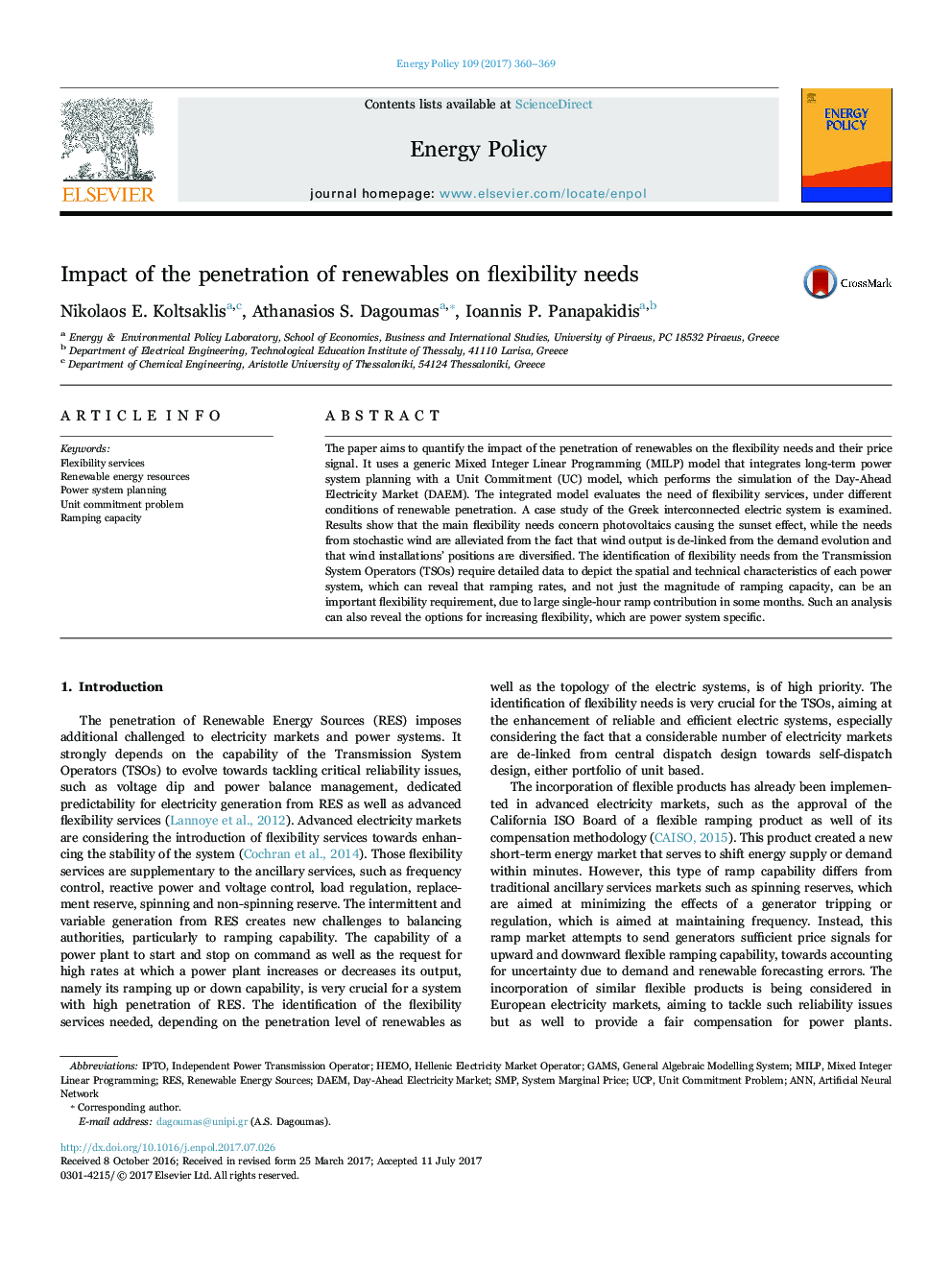| Article ID | Journal | Published Year | Pages | File Type |
|---|---|---|---|---|
| 5105699 | Energy Policy | 2017 | 10 Pages |
Abstract
The paper aims to quantify the impact of the penetration of renewables on the flexibility needs and their price signal. It uses a generic Mixed Integer Linear Programming (MILP) model that integrates long-term power system planning with a Unit Commitment (UC) model, which performs the simulation of the Day-Ahead Electricity Market (DAEM). The integrated model evaluates the need of flexibility services, under different conditions of renewable penetration. A case study of the Greek interconnected electric system is examined. Results show that the main flexibility needs concern photovoltaics causing the sunset effect, while the needs from stochastic wind are alleviated from the fact that wind output is de-linked from the demand evolution and that wind installations' positions are diversified. The identification of flexibility needs from the Transmission System Operators (TSOs) require detailed data to depict the spatial and technical characteristics of each power system, which can reveal that ramping rates, and not just the magnitude of ramping capacity, can be an important flexibility requirement, due to large single-hour ramp contribution in some months. Such an analysis can also reveal the options for increasing flexibility, which are power system specific.
Keywords
Related Topics
Physical Sciences and Engineering
Energy
Energy Engineering and Power Technology
Authors
Nikolaos E. Koltsaklis, Athanasios S. Dagoumas, Ioannis P. Panapakidis,
